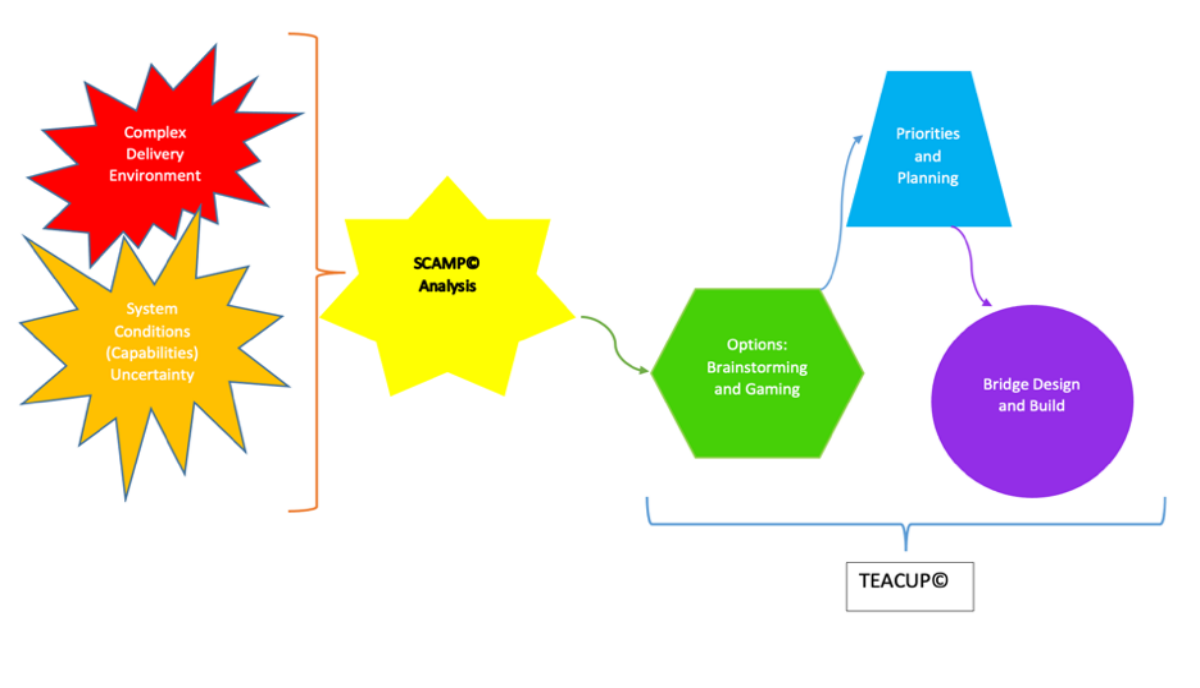CA:TNP© Process and Output
CA:TNP© has been designed as a flexible, multiple session process that can accommodate most work schedules. We begin with data gathering in confidential one-on-one discussions with each team member. Discussions focus on the complexity factors in the team’s delivery environment and the capabilities the team has or needs to address them. The confidentiality assists team members to speak freely about their knowledge and experience eliminating concerns about describing their ideas or perceptions in front of others. Depending on the size of the team, this may be completed in one day (up to 5 team members) or take 2 or more days.
The data gathered in these discussions is then processed through our proprietary software, SCAMP©, which reports on the complexity factors, the system conditions (capabilities of or needed by the team to address the complexities more effectively), and any gaps between them. The report includes both tables and colour-coded matrices for visual display of the data, and some potential priority recommendations identified based on the data.
The first facilitated session with all team members includes some educational background on complexity, complex adaptive systems, and how they impact policy delivery as background to understanding the findings and initial recommendations reported. The recommendations open the discussion amongst team members about their policy delivery priorities as understood within a complex adaptive system environment. The goal of the first session is the generation of priorities needing to be addressed, whether they are the initial recommendations or alternatives identified during the discussion. Once priorities are agreed, the team is assigned the task of brainstorming resource and planning options in addition to ones suggested by the CA:TMaPS team.
The second facilitated session focuses on developing these options through small group discussions of potential actions and their interactions within the delivery environment, which are gamed to elucidate the potential unexpected outcomes of each option. Once the options have been fully explored, priorities are re-examined in groups and/or individual brainstorming sessions.
The third and final facilitated session develops the priorities and solutions based on their likely interactions within the complex adaptive systems involved, generating proposed actions in small groups (if the team is too large for a whole-team process), which are explored closely by the whole team (if small groups generate them) applying all the hats in a multiple hats system (such as https://www.dau.edu/tools/Documents/Coaching%20Guide/resources/6%20Thinking%20Hats%20-%20Parallel%20Thinking%20Worksheet.pdf) or alternative, if the team or organisation has a different, preferred option.
Through this iterative interactive process, the action plan steps are fully explored, and a plan built to bridge the gaps between the current team circumstances and circumstances that will enable them to successfully apply complex adaptive systems principles in policy planning and delivery.
Once the formal facilitated process is complete, CA:TMaPS checks in with teams at 1, 3, 6, and 12 months to ensure they are on track. Additional assistance can be available in the event that unexpected changes have compromised the bridging action plan process or schedule; however, this may incur additional costs depending on the intensity of the assistance required.

